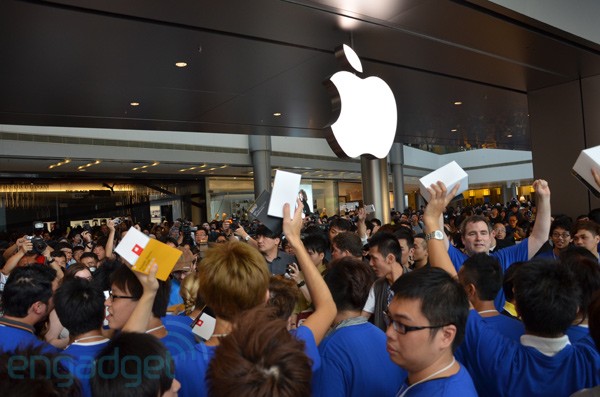 Apple opened its first retail store in Hong Kong on Saturday. According to an Apple Insider report, the Cupertino company spent more on its construction — around $20 million — than on any other of its 300-plus stores around the world.
Apple opened its first retail store in Hong Kong on Saturday. According to an Apple Insider report, the Cupertino company spent more on its construction — around $20 million — than on any other of its 300-plus stores around the world.
The new store is situated in the International Finance Centre (IFC) in Central District on Hong Kong Island and has views of Victoria Harbor.
To help accommodate the hundreds of people waiting in line Friday night, IFC staff allowed people to stay inside the mall after closing time. A Starbucks located in the vicinity also remained open through the night.
There are over 100 Apple resellers in Hong Kong, but up to now it didn’t have its own Apple Store. Another is thought to be planned for the Causeway Bay district of Hong Kong next year.
The company also opened its third Shanghai store on Friday. According to Bloomberg, Apple is keen to expand the availability of its products throughout China in the face of increased competition from rivals such as Samsung and Lenovo.
Despite these recent openings, however, the company appears to be behind schedule with its plan to open 25 stores in China by February next year. So far there are only six.
Shaun Rein, managing director of China Market Research Group, told Bloomberg that the slow rate of openings is giving companies selling Android devices valuable time to gain market share.
Rein explained: “In many ways they are still behind the curve, and they are opening stores too slowly. Before, Apple had clear dominance in terms of technology, but now the gap is being lowered because of Android.”
David Wolf, CEO of Beijing-based marketing strategy firm Wolf Group Asia, believes Apple was always going to find it difficult to open so many stores in such a short time. “I don’t think anyone really expected them to come up with 25 stores in 24 months. Apple set a very high bar for themselves in a market where the logistical challenges are profound,” he said.
In the second calendar quarter this year, Apple’s retail empire generated revenue to the tune of $3.5 billion and made profits totaling $828 million. In that period, more than 70 million people visited its stores worldwide.


